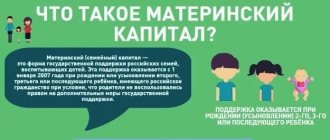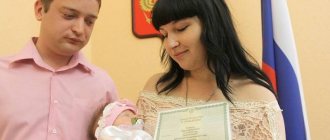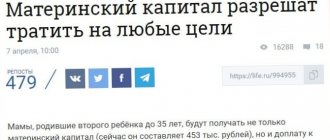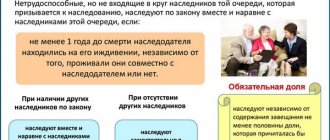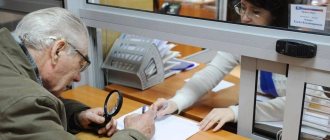The legislation of the Russian Federation gives the right to mothers and fathers of disabled minors to invest a maternal certificate in the health of their children.
This innovation came into effect at the beginning of 2020. Moreover, the baby does not need to wait until he is three years old. However, directing maternal capital to the treatment and rehabilitation of a disabled child is not as easy as it seems. Other legislative acts have approved a list of services, equipment and devices provided to people with disabilities free of charge. Therefore, parents are limited in their actions. They find themselves in a difficult situation:
- On the one hand, there are state aid funds. They are legally allowed to be invested in the health of the offspring.
- On the other hand, the necessary medications, devices, and services for minors should be provided free of charge.
You need to understand how to properly use maternity capital for rehabilitation and living arrangements for a disabled child. Let's look into this issue.
What is social rehabilitation and habilitation of a disabled child
Children with disabilities have difficulty integrating into society due to their physical disabilities, and therefore parents do their best to help them feel comfortable in public. To do this, one has to overcome emotional, environmental, cultural, informational, labor, psychological and physical isolation. Innovations in the law on maternity capital are designed to help parents of children with this.
Social adaptation is the creation or restoration of connections with the life of society lost by children with disabilities, as well as providing them with assistance with inclusion in the processes of education, leisure, work and everyday life.
Rehabilitation of a disabled child is the adoption of various measures aimed at restoring impaired body functions (restoring health by any available means and providing assistance in functioning in society even in the presence of health problems).
Habilitation is the formation of a child’s abilities and abilities for play, work, educational and everyday activities and self-care that are absent due to poor health.
What is an individual rehabilitation program for a disabled child?
To prove that a child with a disability really requires goods/services that the mother intends to purchase with maternity capital, it is necessary to visit the bureau of medical and social examination, undergo an examination and receive an extract that will be sent to the Pension Fund of the Russian Federation (within 3 days from the date signing the document). The rehabilitation program is drawn up for a period from 1 year to 18 years (until the child reaches adulthood); a disability group is not established for children.
The program will describe what support measures the child needs, what abilities he has, what equipment and devices he would need for normal life, and what the forecast for the activities will be. Recommendations may relate to free and paid events - maternity capital funds are allocated for the latter.
Conditions under which maternity capital is allowed to be spent on a disabled child
Since the beginning of 2020, Russian families raising children with disabilities have received the right to use a maternity capital certificate to pay for the rehabilitation of their child. The conditions for spending funds are as follows:
- Maternal capital can be spent on purchasing goods and paying for services that would help a child with special needs integrate into society and social adaptation.
- Before purchasing goods or paying for medical services, it is necessary to provide an individual rehabilitation program for the child, drawn up by medical and social experts (to confirm that the child really needs these goods/services).
- It will not be possible to pay for goods and services if they are included in a special list (a list of goods and services for people with disabilities that are provided free of charge at the federal level). The list was approved by Order of the Government of the Russian Federation dated December 30, 2005 No. 2347-r.
- You can spend maternity capital on a disabled child born first, second, third, etc. - not only for that child, after whose birth the right to maternity capital arose in the family.
- A disabled child, for whose rehabilitation maternity capital funds can be used, can be natural or adopted.
- You can spend maternity capital on the needs of a child with disabilities without waiting for the youngest child to turn 3 years old.
- First, the family pays for goods/services with its own funds, and only then receives compensation from maternity capital.
- As proof of the fact that the product was purchased (the service was received), there is an act of inspection of the residential premises in which a disabled child lives by social service authorities.
The meaning of innovation
According to the Pension Fund of Russia, the number of families that received a certificate and have disabled children in 2020 alone amounted to 13.5 thousand people. Of course, all these children, like their families, need support from the State. And all because the socialization of such citizens is a difficult and, most importantly, expensive task.
In this regard, it was decided that part of the funds from state aid will be given to disabled children for the following purposes:
- Rehabilitation of children whose disabilities are actually recorded in the ITU.
- Socialization, which allows the child to be introduced into the social environment.
How exactly can you spend maternity capital on a disabled child?
Important! You can check whether the allocation of maternity capital funds for a service (good) necessary for a disabled child is based on the text of Decree of the Government of the Russian Federation dated April 30, 2016 No. 831-r. If a service (product) is mentioned in the text of the document, it can be purchased and then receive compensation.
Initially, it was assumed that maternal capital funds could be spent on teachers, a reader, a nurse, a psychologist, a speech therapist, creative activities, visits to sensory rooms, and alternative therapy (for example, dolphin therapy or feline therapy). However, in the end, the Government left only one item - payment for the services of the reader-secretary. As for goods, the list is wider:
| Product group | Types of goods |
| Communication means | Electronic organizer; clock with indicators and signals; keyboards, games, headphones; laptops, PCs, tablets, phones with voice output. |
| Sanitary and hygienic equipment | Climate indicator meters; bathing aids; bath and shower chairs; folding and portable bathtubs. |
| Technical means | Motorized chairs, beds; ramps; vertical conveyors (platforms, elevators). |
| Specialized sports equipment | Various adaptations for the blind and other disabled people; treadmills with speech output; bicycles for patients with cerebral palsy; exercise equipment that activates movements. |
| Developmental and Mobility Adaptations | Computer/book stands, aids; Braille display for the visually impaired; means for lifting and moving. |
What can you spend your maternity capital on?
A specific list of means of rehabilitation and adaptation was approved by the Government of the Russian Federation on April 30, 2020 (Order No. 831-r). This includes 48 items. Only the purchase of one or more goods from the list is allowed to be compensated with maternal capital.
Goods
The list includes a variety of devices that make life easier for a little person and his mother. Among them:
- computer equipment (laptops, stationary devices);
- specialized displays for the visually impaired;
- measuring instruments;
- writing, reading and calculating machines;
- hearing devices;
- orientation aids;
- devices that help master independent household skills;
- clocks and furniture;
- Cell phones;
- devices for blood analysis.
Children who move with difficulty and are deprived of such an opportunity are allowed to purchase:
- chairs on wheels;
- chairs, stools for the bathroom;
- specialized beds;
- lifts;
- portable and stationary baths.
A number of products are aimed at developing a child's intelligence . These are:
- games;
- trays, book holders;
- device and consumables for writing and reading the Braille alphabet;
- training equipment;
- ramps;
- means for maintaining memory.
Important: each of the items must be indicated in the IPRA.
Services
Initially, the draft document included several services that the children needed. They left only one thing - the help of the assistant secretary.
Hint: you should draw up a formal contract with a specialist.
What documents need to be collected for presentation to the Pension Fund?
To receive compensation for a purchased product (paid service) needed by a child with a disability, you need to collect the following documents:
| Document | Clarification |
| Application for disposal of maternity capital | View sample application |
| Passport of the mother of the children who issued the certificate | In some cases, the designer is the father of the children |
| Bank account details | To transfer compensation |
| Extract from an individual rehabilitation program | It should list goods and services that the child needs and that are not paid for from the country’s budget. |
| Certificate of checking the availability of purchased goods | Must contain confirmation of the purchased product, its compliance with the list and rehabilitation program, name of the product, information about the recipient of the maternity capital certificate |
| Documents proving payment for goods/services | Warranty card, invoice, payment agreements, checks, etc. |
Legislative acts on the topic
| Federal Law of December 29, 2006 No. 256-FZ | On additional measures to support families with children |
| Federal Law of November 28, 2015 No. 348-FZ | On amendments to the current law on maternity capital regarding the expenditure of funds for the rehabilitation of disabled children |
| Decree of the Government of the Russian Federation of April 30, 2016 No. 380 | Rules for allocating maternity capital funds to a disabled child |
| Order of the Government of the Russian Federation dated April 30, 2016 No. 831-r | List of goods and services for social adaptation and integration of disabled children into society |
| Order of the Ministry of Labor and Social Protection of the Russian Federation dated July 31, 2015 No. 528n | Rules for drawing up an individual rehabilitation program |
Providing services according to the free federal list
There is a list of activities that are provided to disabled children completely free of charge according to the federal list. This includes the provision of technical equipment and medications, prosthetics, and sanatorium-resort treatment.
Please note that maternity capital
You can’t spend it on these purposes!
The free federal list lists the following goods and services:
- Measures taken to rehabilitate the child. That is, this is restorative and reconstructive treatment, which includes items such as orthotics, prosthetics and medications.
- This also includes means for special rehabilitation.
Specialized tools of this type include:
- Equipment designed to care for disabled people - such as special handrails, wheelchairs and canes.
- Devices for hygienic procedures include special absorbent underwear, anti-bedsore mattresses, devices for grasping objects and dressing.
- Devices created specifically for orienting disabled people - that is, the help of dogs specially trained for this (this also includes all the necessary equipment).
- Prostheses and prosthetic-type devices - this includes not only the prostheses themselves, but also special underwear, hearing aids, shoes, and so on.
- Reading devices for the visually impaired and so on are used as educational aids.
- If necessary, communication devices are provided, such as voice-producing devices or televisions equipped with teletext for the visually impaired.
- Additionally, children with special needs are provided with rehabilitation services, such as typhology and sign language interpretation, maintenance for guide dogs, as well as repair of TSD.
Those devices listed above are fully paid for by the state. As for TSR, they remain at the child’s complete disposal.
If the TSR was purchased by the child’s family, then compensation for the funds spent is possible. However, you need to contact the social security authorities for this.
Common mistakes
Error: A family with a disabled child expects to receive federal maternity capital in an increased amount.
Comment: The proposal to increase the amount of maternity capital for families raising a disabled child was rejected by the State Duma.
Error: The family is going to spend maternity capital on the treatment of a mother who became disabled after giving birth when her second child appeared.
Comment: Spending maternity capital funds on the treatment of a disabled mother or children with disabilities is not provided for by the federal program.
Answers to common questions about how to spend maternity capital on a disabled child
Question No. 1: Can the purchase of a car to transport a child with disabilities be considered as spending maternity capital on the rehabilitation of a disabled child?
Answer: No, such a proposal was proposed for discussion in the State Duma more than once, however, this option for spending funds was rejected. This is due to the high risks of theft, breakdown and resale of the car in order to cash out maternity capital.
Question No. 2: Can maternal capital funds be used to pay for an expensive operation for a disabled child?
Answer: No.
The State Duma did not accept the proposal to spend maternity capital funds on the treatment of a disabled child, despite the fact that children are forced to wait for years for federal quotas for free operations and other medical procedures. Rate the quality of the article. Your opinion is important to us:
IPRA
This document is being developed by ITU specialists and includes a whole range of activities that are developed individually for each disabled child. The document is drawn up in two copies, one of which is given to the parents, and the second remains in the ITU.
The document includes:
- Medical direction.
- Help from professionals.
- Work with specialists of psychological and pedagogical orientation.
- Social support.
- Physical education direction.
- Devices and activities that can be obtained through federal support.
- Funds purchased with maternity capital money.
If any changes are made to the IPRA, you need to re-refer to ITU
and draw up a new paper again.
The IPRA must be in effect at the time when funds for a disabled person are purchased.
In the event that a maternity capital certificate will be used for payment in the future, you must indicate in the appropriate section of the document the product or service that should be purchased.
On Monday, a bill was introduced into the State Duma allowing the use of maternity capital (MC) for expensive treatment of mother and child. The author of the document, the Legislative Assembly of Buryatia (people's khural), proposes to introduce into the Federal Law “On additional measures of state support for families with children” dated December 29, 2006, an additional article concerning the disposal of funds (part of the funds) of the MK. It is assumed that these funds can be transferred to any medical organization in Russia to pay for high-tech treatment that is not provided within the framework of state guarantee programs for free medical care.
According to Republican deputies, the bill expands the ability of citizens to manage MK funds “in the most effective and rational way.”
“Parents have repeatedly drawn attention to the big problems with organizing expensive treatment. Many types of such assistance are provided only in the leading centers of the country and are completely absent in remote regions. All this delays the possibility of receiving such help for many years, and for many children it remains completely inaccessible... In their numerous appeals, parents note that they are ready to use MK funds primarily for timely high-tech treatment,” says the explanatory note to the bill .
In 2013, the capital amounted to about 409 thousand rubles. The corresponding certificate can be used in whole or in part to improve living conditions, educate a child, or form a funded part of a pension for the mother. Receiving money in cash is prohibited by law.
The Ministry of Health has not yet commented on the bill. However, proposals to allow MK funds to be used to pay for voluntary health insurance, treatment or the purchase of medicines have been made before. And each time there were “clarifications” from the government that MK is intended for completely different purposes, and that the high-tech assistance included in the standards is provided to citizens of the Russian Federation free of charge as part of compulsory health insurance (CHI).
First Deputy Chairman of the State Duma Committee on Health Protection Nikolai Gerasimenko also considers the proposal of the people’s khural “excessive”. According to him, the Ministry of Health has the ability to provide all the necessary high-tech medical care to children and mothers. However, the deputy made a reservation that he is not yet ready to give an official opinion on the bill, since no one in the committee has yet seen it (on Monday the bill was only registered and sent to the Chairman of the State Duma).
According to the chairman of the Moscow City Duma commission on social policy, Mikhail Antontsev, “giving seriously ill people the opportunity to survive within the framework of compulsory medical insurance is the responsibility of the state.” “When the Moscow City Duma was just sent a draft law on maternity capital for review, in this review we proposed to include treatment costs in the nascent system. And we received the answer that everything would, of course, be done at state expense within the framework of compulsory medical insurance. And we just need to demand compliance with the law,” said the deputy.
Meanwhile, in reality everything is far from being so smooth. According to the chairman of the Commission of the Public Chamber of Russia on social policy, labor relations and the quality of life of citizens, director of the Social Information Agency Elena Topoleva-Soldunova, an expert assessment of compulsory medical insurance quotas and tariffs shows that they are underfunded by 3-4 times.
Often, public health care will guarantee payment for the second stage of treatment without paying for the first - for example, in the case of a bone marrow transplant. The current legislation does not contribute to the effective treatment of sick children, leading to the purchase of low-quality generics instead of effective original drugs. And these purchases themselves are such a slow process that many patients die without receiving the medicines they need.
“Of course, when using MK funds for treatment there must be some restrictions and control, but in general this is the right proposal,” Topoleva-Soldunova told Gazeta.Ru. “If it becomes possible to use MK funds for expensive treatment that is not prescribed in government guarantees, but is necessary, this will seriously simplify the lives of people who are forced to raise money around the world today.”
In addition, the state guarantee program applies only to treatment carried out according to protocols and standards - approved guidelines for action. However, standard measures do not always help.
Deputy Director of the Federal Research and Clinical Center for Pediatric Hematology, Oncology and Immunology named after A. Dima Rogacheva (FNKTs) Galina Novichkova. According to her, the research center has the right to use its own evidence-based therapy. But this is the use of technologies that are not financed by the budget, and drugs that are not registered in Russia. In addition, the continuation of therapy started in the center at the child’s place of residence is absolutely not ensured.
The solution to this problem at the Federal Scientific Center was taken over by the Gift of Life charitable foundation for helping children with oncohematological and other serious diseases. In 2012, the fund purchased unregistered drugs for 28.4 million rubles. The foundation allocated 23.5 million rubles to search for unrelated donors and deliver bone marrow from abroad. The “Medicines at home” program for patients of the Federal Scientific Clinical Center amounted to 14.5 million rubles.
Co-chairman of the board of trustees of the Gift of Life Foundation, Chulpan Khamatova, in her speech, divided the fund’s expenses into those that are not financed by the state in principle, and those that are not covered by budgetary funds due to the imperfection of the regulatory legal framework. The first group includes payment for the search and activation (determination of suitability) of a bone marrow donor (in Russia, bone marrow transplantation from an unrelated donor is carried out exclusively with the support of philanthropists), the purchase, import and customs clearance of drugs not registered in the Russian Federation, payment for accommodation of non-resident patients on outpatient treatment. The second group is even broader. But first of all, this is targeted procurement of medicines.
“The child cannot take a break from taking medications, so the funds provide a supply for one to two months after discharge from the hospital, so that parents have time to draw up documents for their preferential receipt,” Khamatova explained.
In addition, it is often not possible to obtain, at the expense of the regional budget, a life-saving drug for a child that is not included in the list of additional drug supplies. And when purchasing at the expense of budgetary funds, priority is given to drugs with the lowest price. As a result, regions often purchase generics that have not undergone clinical trials for use in children. And finally, many medical institutions refuse to accept extrabudgetary funds in order to maintain performance. “Very often doctors are prohibited, under threat of dismissal, from telling patients that there is a foreign analogue to a domestic medicine,” Khamatova said.
The officials who took part in the meeting did not deny the fact of a lack of funds. As Health Minister Veronika Skvortsova said, full funding of state medical care programs (from medical examinations to high-tech medical care) is expected only by 2020. Even so, new treatments will emerge that outstrip government funding. “This concerns rehabilitation, rare diseases, and the provision of expensive medications on an outpatient basis,” the minister explained.
Meanwhile, citizens who received MK certificates during the program are trying by hook or by crook to cash them out.
The Internet is full of advertisements about cashing out certificates through the participation of their owners in fraudulent schemes related to the purchase and subsequent sale of housing or lending for such a purchase. According to the Russian Pension Fund, which issues certificates, facts of misuse of MK funds are registered in dozens of regions of the country. This is most common in regions with low living standards.
At the end of March 2013, the head of the Pension Fund, Anton Drozdov, said that the fund advocates the possibility of issuing MK, or at least part of it, in cash in the future. According to the official, this could reduce the corruption component when cashing out funds by unscrupulous structures.
The problem is also recognized “at the top”. For several years, the government has been improving the scheme for using MK to work with real estate (this is the most popular way of investing capital). The law has been amended to allow paying the down payment on mortgage lending with MK funds, paying off interest on the loan, and even allowing refinancing of the loan. In 2010, maternity capital was allowed to be used for payments on the secondary housing market. It is possible to pay for an apartment with a certificate that was issued to the child’s mother if the housing is registered in the name of the father. There were also proposals from deputies to allow maternity capital funds to be placed on deposits in banks.
It is possible to direct maternity capital funds to any of the children, not necessarily the one whose birth resulted in the receipt of a certificate.
It is important to understand that the article describes the most basic situations and does not take into account a number of technical issues. To solve your particular problem, get legal advice by calling the hotlines:
Changes regarding this innovation were made at the end of 2020 and came into force on January 1, 2016. Until May 2016, the law did not discuss the conditions for spending funds until two Government Decrees were signed:
List of goods
The legislation limits the list of goods on which maternity capital funds can be spent. The full list is contained in Government Order No. 831-R
. It includes:
- Technical rehabilitation devices: ramps, lifts, specialized automatic wheelchairs, beds.
- Technical devices to support development: Braille displays for children with visual impairments, specialized furniture elements.
- Specialized sports equipment: various exercise machines for rehabilitation, running machines with speech control, exercise machines for those with cerebral palsy.
- Hygiene facilities: specialized bathrooms, shower chairs.
- Communication devices: specialized equipment with voice control capabilities, special watches, various gadgets configured to control people with disabilities.
- Services for social adaptation: this item only includes payment for a special reader for people with vision problems.
Matkapital for treatment
cannot be spent on treating a disabled child
, since the provision of drugs and surgical operations and interventions in Russia for 2020 are included in the services of free medicine for the disabled.
It should be noted that quotas for surgical treatment provided by the state, according to statistics, are not able to provide surgical treatment to all those in need. Some types of operations are not carried out
. Also, the finally adopted list of services, payment for which was included in the maternity capital program, did not include speech therapy and psychological consultations.
Let's list the list of rehabilitation
, which is free for disabled people, that is, it is prohibited to receive them using this capital:
- Rehabilitation procedures: surgical operations, therapeutic treatment (including medications), treatment in sanatoriums, prosthetics services (including hearing aids), vocational guidance work for persons with disabilities.
- Technical equipment for rehabilitation: crutches, all kinds of prostheses, special shoes, wheelchairs, guide dogs, voice transduction devices, diapers, chairs for sanitary procedures.
- Services: repair of the above-mentioned technical equipment, maintenance of dogs for the visually impaired (in the form of a sum of money), sign language interpretation.
How to use the funds?
The rules for using maternity capital funds for the purchase of goods for the rehabilitation of children with disabilities are established by Federal Law No. 256 in Art. 11.1.
The law allows the use of funds until the child turns
3 years
.
Payment for purchased rehabilitation equipment is made in the form of compensation
funds spent. That is, parents of a child with a disability must purchase something from the IPRA list at their own expense and then submit documents for reimbursement of costs.
This procedure for spending maternity capital funds in relation to disabled children does not seem justified. who are raising such children, it is often financially difficult to pay for quite expensive devices or services. Moreover, the law does not provide any guarantees that the purchase made will be reimbursed from maternity capital funds.
To refund your purchase
the person who owns the certificate must apply to the Pension Fund with certain
documents
:
- passport;
- extracts from the IPRA of a disabled minor, which contain information about the child himself and rehabilitation measures for him. There is no requirement to submit data on those services that fall under other federal programs and cannot be paid for from maternity capital;
- documents for goods purchased, services received (receipt, invoice, documentation, service agreements);
- account details where funds will be transferred based on the results of the verification.
An important point is the need to provide an inspection report
, which constitute social bodies. It contains:
- information about the person who has maternity capital;
- information about the product that was purchased for the rehabilitation of a child with a disability;
- the fact of its acquisition and use;
- compliance of the purchased goods with the Government list and IPRA requirements.
Transfer deadlines
funds after providing all papers and checks should not exceed
2 months
.
The most popular questions and answers regarding maternity capital for a disabled child
Question:
We received family capital in 2008, when our middle son was born.
In 2014, a daughter was born and she has been disabled since birth due to hydrocephalus. We live in Kamchatka, but in Moscow there is an opportunity to undergo a course of treatment for rehabilitation. We did not use capital. Can we spend it on treating 3 children? And how to get
this money?
Answer:
Federal Law No. 256
, which defines the list of areas for using maternity capital, speaks of the exclusion from this
list of benefits
that are provided. Sanatorium-resort treatment falls precisely on this list. We recommend that you contact the social protection department to exercise your right under this law.You can use maternity capital for the rehabilitation of the third or any other child. It must be taken into account that the funds must be directed to funds or services provided for by law and the child’s IPR, and the fact that the money will be transferred after the acquisition.
Since the beginning of 2020, the application possibilities have been expanded. Now MSC funds can be spent on disabled children, or rather on the purchase of goods and services for their social adaptation and integration into society
. But the joy of the innovation for certificate holders with children with special needs quickly gave way to disappointment about the decision made:
The positive aspects of the innovation include:
- the possibility of using maternity capital for any disabled child in the family, regardless of the order of his birth
; - send MSC funds in this direction at any time
- without waiting for the birth of which gave the right to a certificate.
